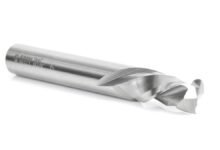What is the boot of building materials?

In the construction industry, continuous learning is always a smart idea.
Whether you are building for two or twenty years, you will find a way to improve your process and save time for yourself – or a return journey to the scene.
Small error margin in construction. It can eat one wrong measure in your profit or delay the job. This is where the construction takes off.
What is the boot of quantity? This is the way you know exactly What materials need for the job – nothing more and nothing less.
This guide goes through you by taking off in reality. It will explain how to perform one, how it is associated with your discretion, and why the program can be used to save you hours.
We will also cover how to choose the right program.
If you have ever guessed, you mocked the number, quotation prices, or an increase in materials, this guide to you.
المواد ذات الصلة - How to become an estimated building of a professional
What is the boot of construction?

Have you ever asked the materials and then realized that you forgot to calculate the cut on the back wall? For this reason the takeoff is very important.
So, what is the boot in construction?
Building for construction is part of the estimation process. It is the place where you know exactly the materials you will need to finish the task and how many of them are.
It may work from charts, pdfs, or approximate drawing on a napkin. Whatever the method, take off helps you answer questions such as:
- How many square feet of Dreamwal?
- How many logic bundles?
- How much wood for the frame?
- How many linear feet of the plate?
This is not only for you, too. It also helps your customer.
When you build your quotation from the appropriate take off, you avoid the orders of change. You can reduce excessive excavation and you can reserve your price with real numbers.
That protects your Profit margins. It also builds confidence, and high -confidence construction companies are Two times confident When it comes to fulfilling the final dates.
In short, good take off means more surprises. He stands in a smoother construction from the beginning with quotes you can stand behind.
المواد ذات الصلة - What is residential construction? Guide with tips
How to take off

Before you can pricice the job, you need to know what this job really requires. Brection is the basis for accurate appreciation.
Here’s the take -off process:
Step 1: See project plans
Start reading through graphics or domain documents. See everything: floor plans, rises, notes, specifications, etc.
You are looking for a scope and any possible surprises, such as nomadic ceilings or non -standard dimensions.
Do not depend on what the customer told you. Always check the documents.
This step helps you capture the red flags early and learn about what you are about to count and measure.
Step 2: Count and list the required materials
Walking through the functionally from the experimental offer to the end. List of everything you need.
This may mean things like:
- خشب
- Drywall
- pruning
- Fasteners
- Tile
- The lower layer
- Matches
- paint
You may want to break the materials by trade or stage. This makes buying and gradually easier at a later time.
If he goes to the job, he should go to take off. Skip something here completely give you.
المواد ذات الصلة - تقدير مواد البناء: مديرية المقاولين (مع الصيغ)
Step 3: Measurement of ingredients
Use the scale on your plans or digital tools to measure the areas, lengths and folders that you will work with.
You will measure:
- Square shots (floors, roofing)
- Linear footage (trim, tubes, wires)
- Cubic (concrete, insulation) arenas
Your measurements affect the number of materials. The accuracy here provides money and headache at a later time.
Finally, a tour – but not much. Few wise temporary store. One of them may waste your money.
Step 4: Calculate quantities
Next, convert these measurements into the actual product needs.
For example:
- 1,200 square feet of floors may be 35 boxes of sheet (with excess)
- 300 linear feet of the main plate may be 30 sticks with ten feet
- 80 square feet of the Baccablash tiles may be 100 tiles in addition to 10 % of the waste
This step converts the initial numbers to the request leaves. It is the relationship between the plan and the price.
Check your mathematics. Then check it again. It is easy to transform numbers or forget waste.
Step 5: Determining costs
Pic up each line element using your supplier rates or material database. Do not forget the fasteners and delivery fees.
This is the basis for your quotation. If your material takes off is not completely correct, your discretion will not be so.
You can connect your quantities to estimate tools like Joist. This helps you create professional quotes quickly.
Step 6: Examination of an intersection against the scope of work or bid requirements
Once your interest and prices are completed, compare your take off against the customer’s written scope. Is everything in line with the proposal request (RFP) or original roaming notes?
Pick any missed elements or differences between what is on paper and what is expected. For example, if the owner of the house says “distinct combinations” but the plan displays the degree of construction, you will want to indicate early.
Use the review list format and line line.
Step 7: Add an emergency to the unknown
If you are working on formation or insurance repair functions, add an emergency element.
Why? Because unexpected site conditions are common. The emergency keeps you 5-10 % to cover you without giving up the customer when pricing it transparently.
المواد ذات الصلة - How to reduce the late payments for contractors
The difference between building materials and estimates

Some use the terms “take off” and “appreciation” as if they mean the same thing, but they do not do it. They are part of the workflow itself, but each plays a different role.
According to American Building Management Association (CMAA):
“Construction estimation is the process of evaluating all costs associated with a specific building project. The costs generally include direct and indirect expenses, Public expendituresAnd the general contractor. “
You give the customer appreciation. This is what they signed (or they are used to shop).
Bay, on the other hand, is just a list of materials. He tells you:
- What you need
- How many of it
- How to collapse depending on the type or stage
Bay is one of the inputs you use to provide estimate.
المواد ذات الصلة - كيفية تقديم تقدير البناء (في 7 خطوات)
The main differences between taking off and estimates
Here’s how to take off and estimate.
very
- Bay: The number of materials
- Appreciation: the entire job price
Who uses it
- Bay: You and your crew
- Appreciation: You and your customer
When used
- Bay: Early, before you quote
- Estimation: Later, before signing the contract
What includes
- Bay: Materials only (for example, 24 sheets of drywall)
- Estimation: Materials in addition to the work margin in addition to a margin (for example, Drywall installation of $ 3,250)
example
Let’s say that you return a bath. Your boot offers:
- 180 square feet of tiles
- 2 gallons of water isolation
- 1 written drain
- 1 vanity
Your appreciation turns that list into a price. Then the factors in other costs such as installation and relief time.
Bay, and appreciation becomes much easier to trust – for your customer.
Benefits of using the boot program

The software makes the construction take off faster and less vulnerable to expensive errors. Below are the benefits.
دقة
Manual take off on your attention in detail. But even the best professionals make an accidental mistake.
The takeoff program allows you to measure directly from digital plans. While marking the drawing, the program calculates square shots, linear shots and a total of materials automatically.
speed
Most of the tools are cut off from the materials at half. You can click and calculate in minutes instead of hours.
Some platforms save your assemblies as well, so don’t rebuild the same process every time.
This means more quotes that are delivered to your horizons.
Unified costs
Every time you quote a function from scratch, you risk contradictions. With software, you can create a catalog for model materials and rates.
Your numbers remain compatible with jobs, even if the team members are different. It also helps when customers ask about the reason for the cost of something. You have a clear and consistent answer.
Time savings
Once the quitting program is used in a few jobs, the benefits compound. The preserved templates, data, knowledge of features and the fastest workflow take you from a plan to estimate without slowing down.
Instead of burning frequent working hours, you can focus on the following job.
Reduced manual error
Errors in the boot phase have the effect of domino. Lost one and suddenly your quotation is stop, or a short material order, or your thorns disappear.
The boot program reduces this risk. It gives you a system that checks your business and helps to ensure that nothing is missed throughout the way.
من أحد شركائنا – The 8 best solutions for construction
4 tips for selecting the boot program
You know how to take off the construction. Are you ready to improve the process? Here’s how to choose a great program:
- Find the integration of the plan. Go to the program that allows you to download charts, PDFS or digital graphics.
- Check the measurement tools. It should be limited to good programs while tracking or clicking. It is the advantage in which speed and accuracy really occur.
- Make sure it is suitable for your jobs. Choose a tool designed for residential and small commercial projects, not just huge structures. Simple tools often work better for smaller difference.
- Find out if he plays well with your estimated system. You will need a quick delivery of everything you use to build and send quota offers – such as the crane. This keeps your work a reliable and repetition.
(Tagstotranslate) Constituents (T)








